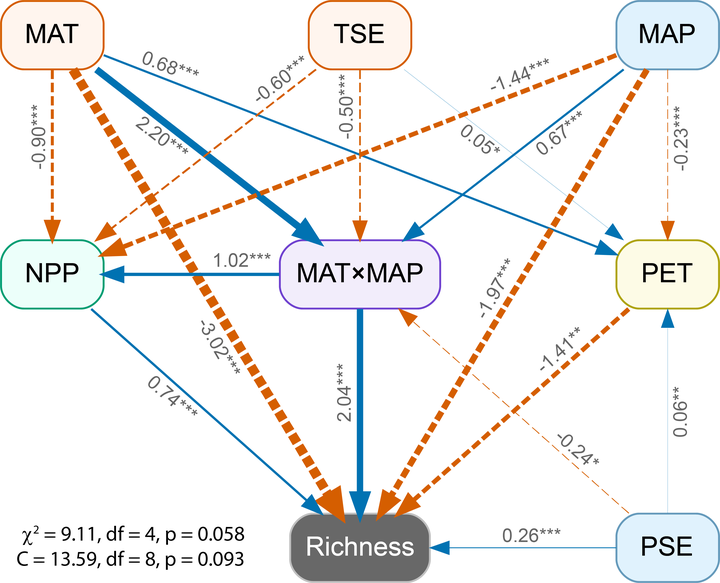Determinants of Plant Species Richness along Elevational Gradients: Insights with Climate, Energy and Water--Energy Dynamics
 Image credit: Authors
Image credit: Authors
Abstract
Background Understanding the patterns and processes of species distributions has long remained a central focus of biogeographical and ecological research. While the evidence for elevational patterns in species richness is widespread, our understanding of underlying causes and mechanisms remains limited. Therefore, this study aimed to entangle the influence of environmental variables on plant species richness along elevational gradients in the Western Himalayas.
Methods We compiled elevational distribution for about 1150 vascular plants using the published literature and available database. The species richness was estimated in 100-m elevational bands using the range interpolation method. We used the generalised linear model and structural equation modelling (SEM) framework to identify the direct and indirect effects of climatic factors on species richness.
Results Our results indicated that primary environmental correlates of species richness varied with elevational gradients. Climatic variables combined with energy and water availability were more important than the topographic heterogeneity. Further, the direct and interaction effects of climatic variables were more substantial than their indirect effects. The indirect effects of climate are more strongly mediated by water-energy dynamics than the energy alone.
Conclusions Overall, our findings emphasise the importance of considering direct effects and interactions among environmental variables while studying the underlying mechanisms governing elevational biodiversity gradients. Species richness appeared to be shaped by climatic tolerances rather than habitat heterogeneity at regional scales. This information can have implications for biodiversity dynamics under environmental change.